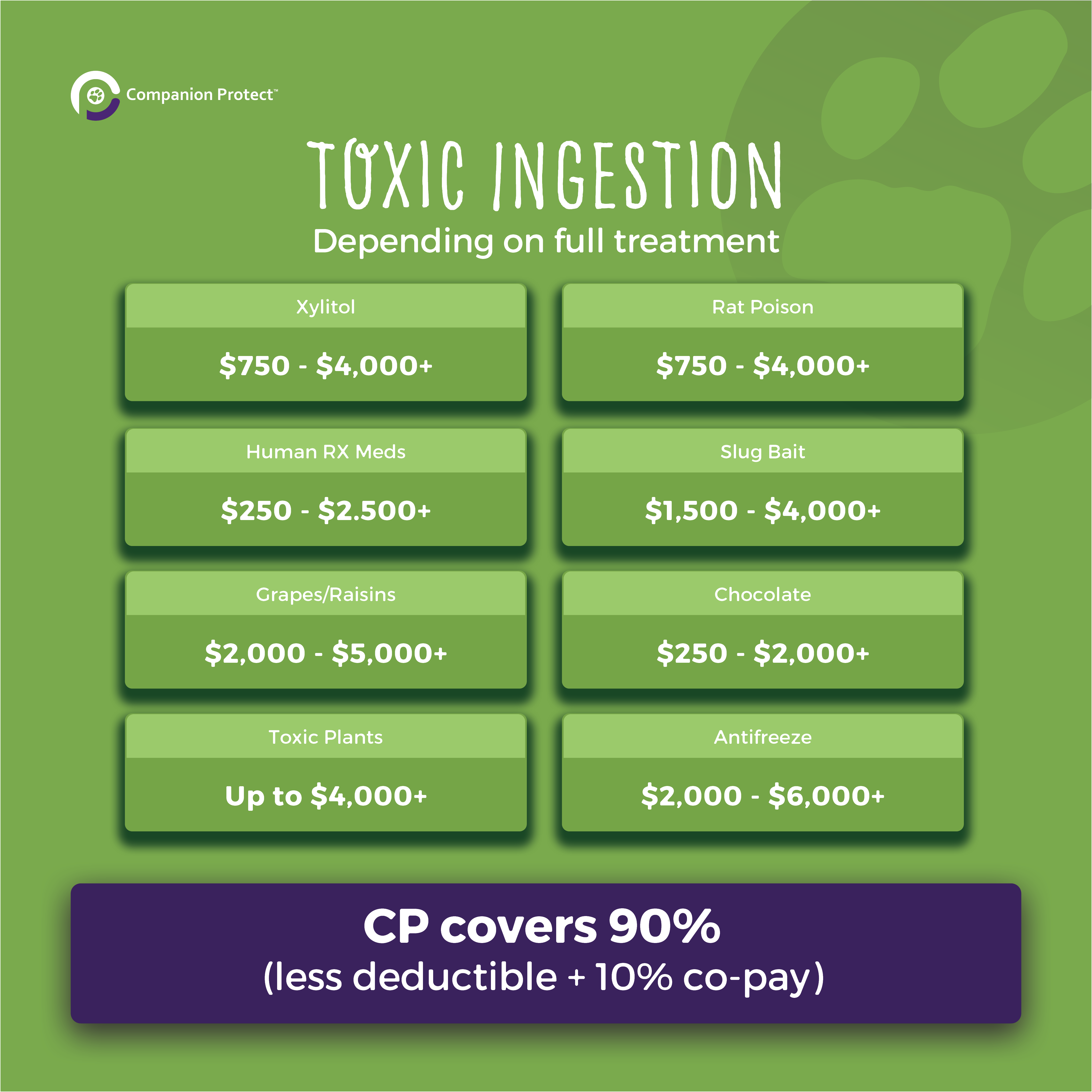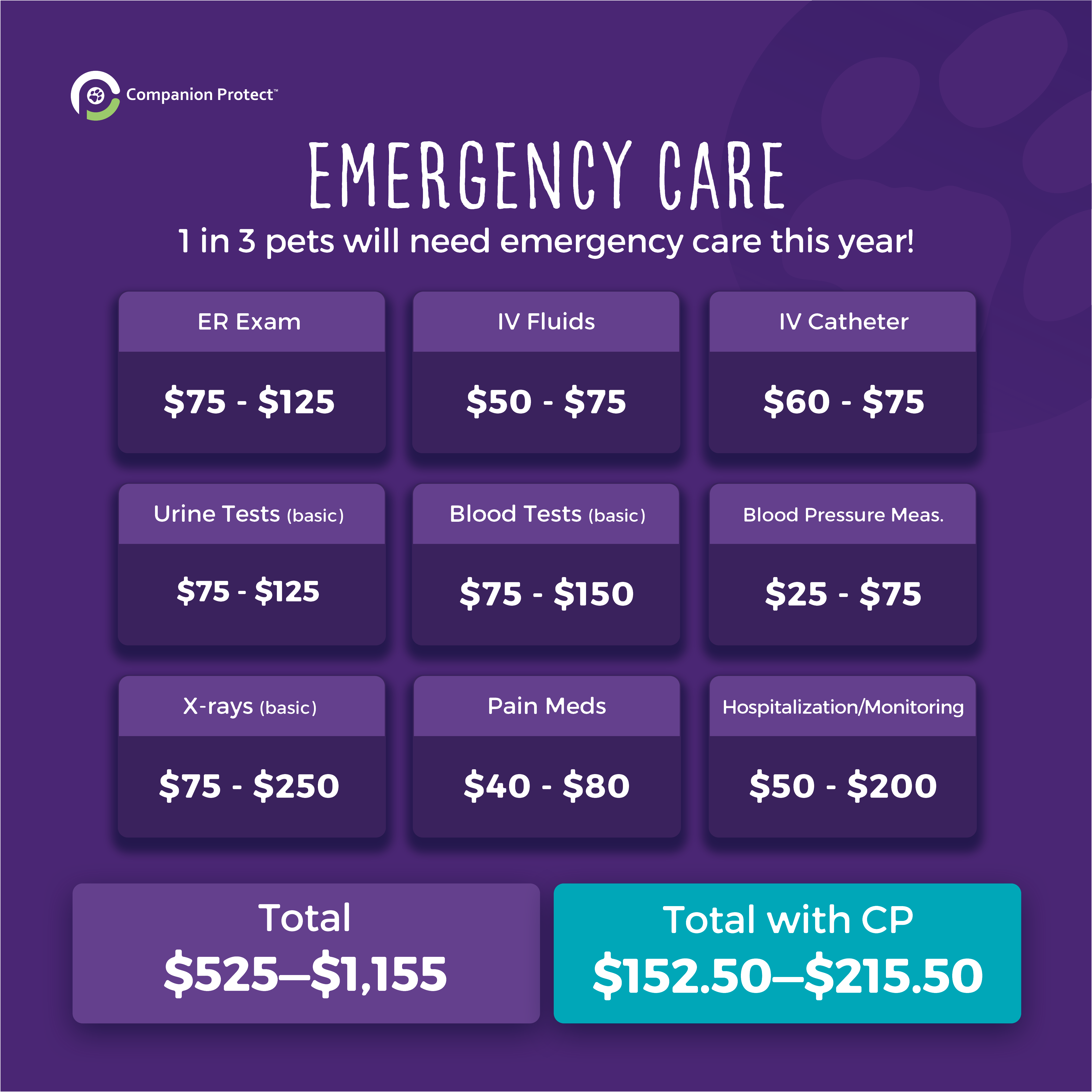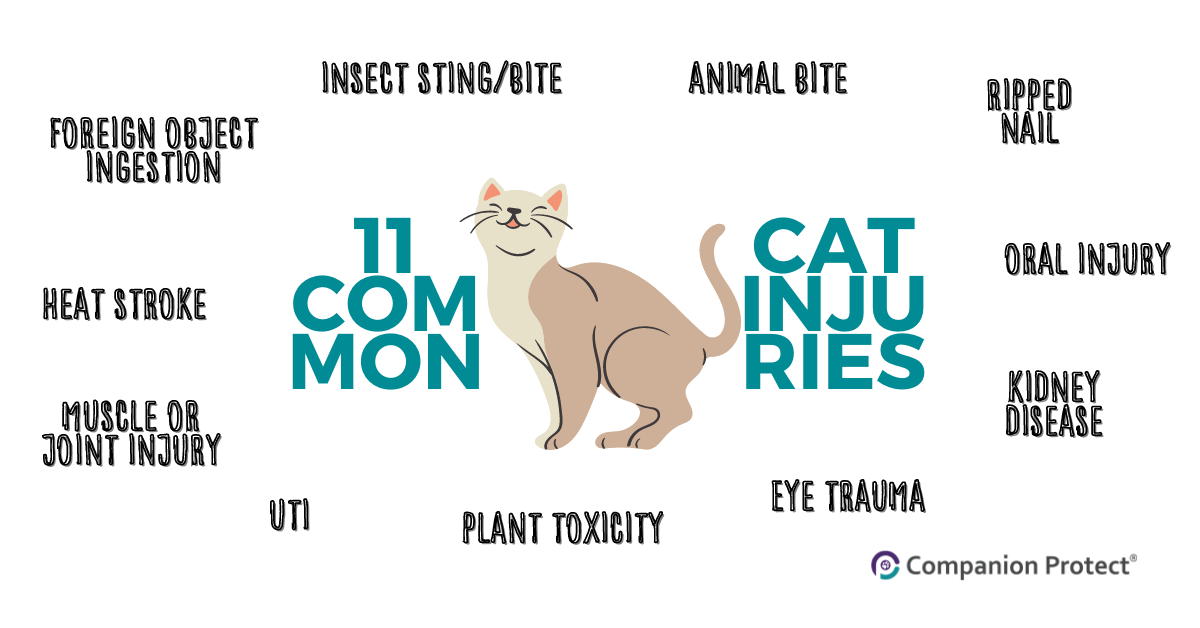Though cats’ curious nature adds to their cuteness, the feline knack for investigation also makes them prone to many different accidents and injuries. To help you keep your kitty happy and healthy, check out this quick primer on 11 common accidents and injuries that can result from their curiosity.
Dogs are certainly more prone to this common accident, but don’t rule it out for your feline friend. It’s possible your cat may mistake a small object as a treat, resulting in choking or a blocked airway. If you suspect this has happened to your kitty, contact your vet right away.
It’s not uncommon for your cat (like dogs) to try and indulge in something they shouldn’t. Be mindful of toxic foods that have been dropped on the floor or left on countertops. Keep dangerous substances like vehicle oils, liquids or coolants on high shelves in your garage and clean up messes left on the ground. Cats also love to chew on plant stems. While some leafy green may be cat-safe, others are highly toxic. Check out ASPCA’s master list of toxic and pet-safe plants to learn more.
According to experts, “The ASPCA Animal Poison Control Center (APCC) is your best resource for any animal poison-related emergency, 24 hours a day, 365 days a year. If you think your pet may have ingested a potentially poisonous substance, call (888) 426-4435. A consultation fee may apply.

You’ve likely seen your cat play “cat and mouse” with a bug. Though mostly harmless, playing with insects can result in a bite or sting. If you suspect your cat may be in pain due to an insect, look for body language like hovering low to the ground, hiding, or muscle tension. Contact your vet right away if your cat is showing any signs of discomfort.
A ripped or broken nail can occur when your cat leaps or jumps from one place to another, or when it catches on certain fabrics or materials. This can be pretty painful for your kitty, so keep an eye on any signs of limping or bleeding. If there’s bleeding and it doesn’t stop soon after the injury, you’ll want to contact your vet.
Tooth injuries can occur when your cat chews on hard objects, foods (like bones), or toys. To mitigate tooth damage, replace any hard toys with softer ones. A cracked or injured tooth can cause gum disease, tooth decay, or loss of the tooth.
Cats are also prone to periodontal (gum) disease much like our canine friends. According to Cornell Feline Health Center, “Studies report that between 50 and 90% of cats older than four years of age suffer from some form of dental disease, but fortunately the most common forms of these diseases are largely preventable or treatable with appropriate preventive dental care and monitoring.” So brushing your cat’s feline teeth at home is good practice. This can be dangerous for you if your cat isn’t used to this — meaning, they’ll be sure to tell you they don’t like it. It’s best to seek more advice from your vet on how to keep your cat’s teeth clean at home and which foods to implement into their diet for overall oral health.
Urinary tract infections (UTIs) are common issues for many cats. According to VCA Hospital, “Cats with UTIs try to urinate very frequently, they may pass only small amounts of urine, they may strain to urinate, they may cry out or whine when urinating, and there may be blood visible in their urine. Urinating outside of the litterbox is also a red flag that something is wrong in the bladder. Finally, frequent licking around the rear end may signal that a UTI is present.” After a urinalysis to rule out Urinary Tract Disease, your vet will know how to best prevent this for your cat moving forward. A nutritionally complete diet, fresh water, and daily cleaned litterbox and frequent pan cleanings is a great first step though!
There’s potential for kidney disease to occur from an injury or trauma your cat may have experienced. This can happen at any age, but especially for cats over the age of seven. If your cat is drinking more frequently than usual or relieving themselves in places they shouldn’t, you need to contact your vet right away. Routine wellness exams can help you stay on top of this as your vet can detect any early symptoms. That’s one reason why Companion Protect® covers not only one annual wellness exam for your covered pet(s) each year, but two if they’re over the age of seven.

Cats are roamers and naturally territorial. When other animals cross into your cat’s realm, scuffles can occur, resulting in bites, scratches, and other puncture wounds. Though dog bites are common in these encounters, wounds from smaller animals can pose serious injuries too. Cats can develop abscesses from smaller puncture wounds or other cat bites because these wounds seal faster, trapping the bacteria inside. Me-youch! If you suspect your cat has been bitten by another animal or appears to have an abscess, you’ll want to contact your vet right away.
Common eye issues in cats include cataracts, conjunctivitis, and retinal disease. Your cat also poses a risk to eye trauma when running at fast speeds, especially during a cat-fighting chase. It’s not uncommon for your cat to hit a tree branch, sharp furniture in your home, or catch a claw to the eye. Regardless of the injury, it’s highly recommended you take your cat to the vet when any eye trauma occurs because they can often worsen quickly.
Though cats are limber and excellent jumpers, they can push themselves too far. When jumping from great heights, there’s always risk of fractures or ligament injuries. If your cat has a bone or muscle injury, you’ll be sure to hear about it from them. Regardless, if you suspect your cat may have injured themselves, it’s best to let your vet take a closer look.
Though not as common as our canine friends, cats can experience heat stroke when in an environment that lacks adequate ventilation, shade, drinking water, or exercise (especially for young and obese cats). Heat stroke in cats is not to be taken lightly as it can cause serious, life-threatening issues like internal organ damage. Physical signs of heat stroke can include:
- Panting, which increases as heatstroke progresses
- Drooling or salivating
- Agitation or restlessness (cats may pace)
- Vomiting, diarrhea (possibly with blood)
- Mental confusion, delirium
- Weakness and lethargy
- Muscle tremors or seizures
- Collapsing and lying down
- …and more
Take your cat to an emergency clinic right away if your cat is showing symptoms of heat stroke.

Thankfully, at Companion Protect (CP), our feline besties have up to 90% coverage for common accidents and injuries. Though accidents and injuries are common, they can happen unexpectedly when you’re least prepared. That’s where CP can help. Vet bills can be expensive. With Companion Protect, you’ll have the coverage you need to make sure decisions about your pet’s healthcare aren’t impacted by financial barriers when the unexpected happens. Click here to get a no-obligation quote today.
P.S. Are you curious to learn about what’s common for our canine friends? Read more!
 SHAYNE STOREY
SHAYNE STOREY
Marketing Specialist
Shayne has a few years experience in digital marketing, content creation and animal care, with her previous role as New Media Intern at The Humane League. In her free-time she loves to cycle (with her dog on her back) and practice yoga. A social cause she cares about is climate change, the welfare of factory farmed animals, and racial equality. Her favorite food is vegan mac & cheese.


